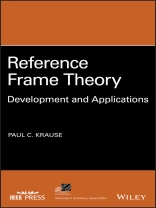Discover the history, underpinnings, and applications of one of the most important theories in electrical engineering
In Reference Frame Theory, author Paul Krause delivers a comprehensive and thorough examination of his sixty years of work in reference frame theory. From the arbitrary reference frame, to the coining of the title ‘reference frame theory, ‘ to the recent establishment of the basis of the theory, the author leaves no stone unturned in his examination of the foundations and niceties of this area.
The book begins with an integration of Tesla’s rotating magnetic field with reference frame theory before moving on to describe the link between reference frame theory and symmetrical induction machines and synchronous machines. Additional chapters explore the field orientation of brushless DC drives and induction machine drives. The author concludes with a description of many of the applications that make use of reference frame theory.
The comprehensive and authoritative Reference Frame Theory also covers topics like:
* A brief introduction to the history of reference frame theory
* Discussions of Tesla’s rotating magnetic field and its basis of reference frame theory
* Examinations of symmetrical induction and synchronous machines, including flux-linkage equations and equivalent circuits
* Applications of reference frame theory to neglecting stator transients, multiple reference frames, and symmetrical components
Perfect for power engineers, professors, and graduate students in the area of electrical engineering, Reference Frame Theory also belongs on the bookshelves of automotive engineers and manufacturing engineers who frequently work with electric drives and power systems. This book serves as a powerful reference for anyone seeking assistance with the fundamentals or intricacies of reference frame theory.
İçerik tablosu
About the Author xv
Preface xvii
1 A Brief History of Reference Frame Theory 1
References 3
2 Tesla’s Rotating Magnetic Field 5
2.1 Introduction 5
2.2 Rotating Magnetic Field for Symmetrical Two-Phase Stator Windings 5
2.3 Rotating Magnetic Field for Symmetrical Three-Phase Stator Windings 11
2.4 Rotating Magnetic Field for Symmetrical Two-Phase Rotor Windings 13
2.5 Rotating Magnetic Field for Symmetrical Three-Phase Rotor Windings 15
2.6 Closing Comments 17
References 17
3 Tesla’s Rotating Magnetic Field and Reference Frame Theory 19
3.1 Introduction 19
3.2 Transformation of Two-Phase Symmetrical Stator Variables to the Arbitrary Reference Frame 20
3.3 Transformation of Two-Phase Symmetrical Rotor Variables to the Arbitrary Reference Frame 24
3.4 Transformation of Three-Phase Stator and Rotor Variables to the Arbitrary Reference Frame 26
3.5 Balanced Steady-State Stator Variables Viewed from Any Reference Frame 31
3.6 Closing Comments 35
References 35
4 Equivalent Circuits for the Symmetrical Machine 37
4.1 Introduction 37
4.2 Flux-Linkage Equations for a Magnetically Linear Two-Phase Symmetrical Machine 37
4.3 Flux-Linkage Equations in the Arbitrary Reference Frame 39
4.4 Torque Expression in Arbitrary Reference Frame 41
4.5 Instantaneous and Steady-State Phasors 42
4.6 Flux-Linkage Equations for a Magnetically Linear Three-Phase Symmetrical Machine and Equivalent Circuit 45
4.7 Closing Comments 49
References 50
5 Synchronous Machines 51
5.1 Introduction 51
5.2 Synchronous Machine 51
5.3 Equivalent Circuit For Three-Phase Synchronous Generator 53
5.4 Closing Comment 57
Reference 57
6 Brushless dc Drive with Field Orientation 59
6.1 Introduction 59
6.2 The Permanent-Magnet ac Machine 59
6.3 Instantaneous and Steady-State Phasors 62
6.4 Field Orientation of a Brushless dc Drive 65
6.5 Torque Control of a Brushless dc Drive 75
6.6 Closing Comments 78
References 79
7 Field Orientation of Induction Machine Drives 81
7.1 Introduction 81
7.2 Field Orientation of a Symmetrical Machine 81
7.3 Torque Control of Field-Orientated Symmetrical Machine 86
7.4 Closing Comments 89
References 89
8 Additional Applications of Reference Frame Theory 91
8.1 Introduction 91
8.2 Neglecting Stator Transients 91
8.3 Symmetrical Components Derived by Reference Frame Theory 93
8.4 Multiple Reference Frames 97
8.5 Closing Comments 97
References 97
Index 99
Yazar hakkında
PAUL C. KRAUSE, PHD, started PC Krause and Associates, Inc. in 1983. He was a Professor in the School of Electrical and Computer Engineering at Purdue University for 39 years and before that he taught at the University of Wisconsin as well as the University of Kansas. He is a Life Fellow of the IEEE and has authored or co-authored over 100 technical papers and three textbooks on electric machines. He was the recipient of the IEEE Nikola Tesla Award in 2010.












